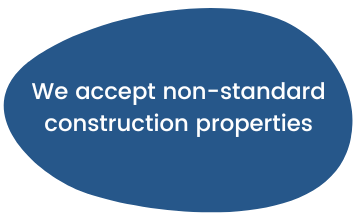
Specialist holiday let mortgage lending
Our holiday let mortgages are suitable for you if you are employed, self-employed, work several jobs, or have retired. We could also help if you have a less-than perfect credit history.
As with our deals on mortgages for buy to let properties, you can opt to make interest-only, or capital repayments.
We accept ex-council properties, where other lenders may not. We also accept short-term “AirBnB” style lettings.
What’s more, you can spend 90 days a year in your holiday let, to enjoy the best of both worlds.
Speak to us today, you could get a lending decision in one call.

Why choose Mercantile Trust for your holiday let mortgage?
We’re one of few lenders that can offer holiday let mortgages for properties located in England, Scotland, Wales and Northern Ireland. Allowing you to borrow from £10,000 up to £500,000
With staycations on the rise and the changes in regulation and taxation tax rules in comparison to traditional buy to lets, a holiday let could be a great way to receive a large return on investment.
Get started now by completing our quick and easy online application form, calling our specialist advisors or starting a live chat with a member of the team.

- Up to 75% loan to value
- Rates from 11.08%
- Applicants must be at least 18 years old
- Individuals and limited companies accepted
- Homeowner/occupiers only (no first time buyers)
- 12 months personal mortgage history required
- Mortgage term can be between 3 and 25 years
- Most property constructions accepted
- 1st and 2nd charge mortgages available
- Mortgage term must end by applicant’s 85th birthday
- Affordability based on 50% of the annual letting income
- 1% stress rate
Frequently asked questions
A holiday let mortgage is a type of finance that allows people to purchase a property that will then be let out on a short term basis to tourists or holiday makers as a business.
It is different to a buy to let mortgage, which is a financial agreement that allows someone to let out a property to live in. A property that has been bought using a holiday let mortgage must be rented to visitors. Some lenders also allow a fixed number of days personal use of a holiday let property.
It’s important to note that holiday let and holiday home mortgages are different. If you want to purchase a holiday home with no intention of letting it out then you will require a second residential mortgage instead.
The amount of deposit you have available can have a significant impact on your mortgage.
The larger your deposit, the lower amount you will need to borrow. If you borrow less money, your monthly payments and interest rates could be lower and the total amount you repay could be reduced.
To help you calculate your holiday let mortgage costs we can lend you a maximum of 75% of the value of the property which means you will be required to pay a minimum of 25% deposit.
Holiday lets are seen as more risky than normal buy to let mortgages to lenders because of the length of tenancies. As such most lenders will require you to provide at least 25% deposit. This means if you wanted to purchase a property worth £200,000 you’d need to provide a £50,000 deposit.
The holiday let mortgage rate you are offered depends on a number of factors unique to your case. This includes your financial situation, the rental income of the property you’re looking to purchase, how much you’re expecting to borrow and your credit profile.
Because of the amount of factors considered, holiday let mortgage rates can vary, as such the best way to find out what rate you may be able to borrow at is to discuss your needs and circumstances with a lender, or broker. A lender will only be able to tell you about their own products, a broker can talk to you about a wide range of products.
A holiday let mortgage differs from a buy to let mortgage in a number of ways.
Firstly, a buy to let mortgage is a financial agreement that allows someone to let out a property usually for a minimum of 6-12 months. Whereas the duration of a holiday let property tends to be for days or weeks.
For a property to count as a holiday let, rather than a buy to let, it must be available for letting as furnished holiday accommodation for a significant proportion of the year.
One of the biggest differences between these types of mortgages is lender criteria. For example, most holiday lets have peak periods of the year and quieter periods of the year. Some lenders will look at the average weekly rental income for low, medium and high seasons to find an average figure.
The way lenders calculate your affordability will differ in comparison to buy to lets, where mortgage lenders look at the rental income paid by long term tenants.

